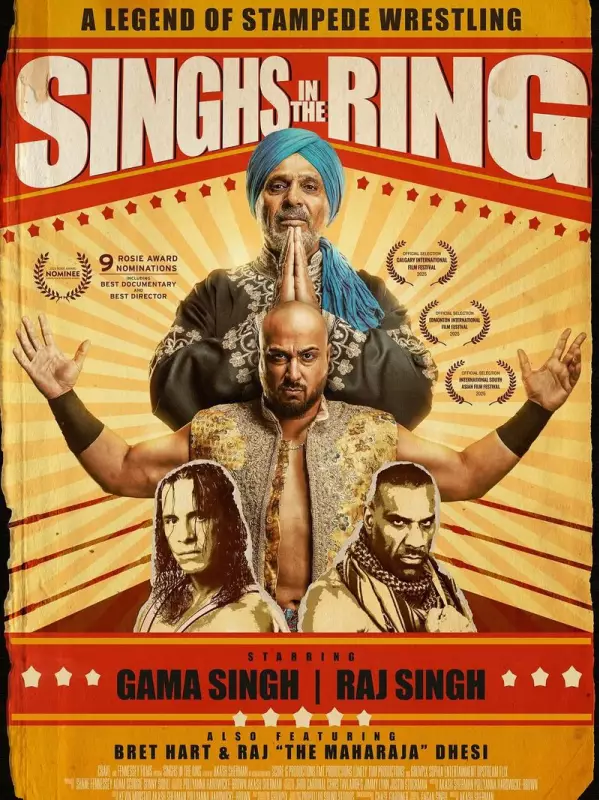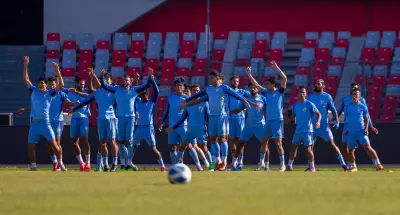
The name Gama Pehalwan resonates through the annals of Indian sports history as one of the most formidable wrestlers the world has ever seen. Born in Amritsar, this legendary athlete achieved what few could dream of - an undefeated career spanning five decades. His story continues to inspire generations, now finding new expression through a Canadian documentary that explores his enduring legacy.
The Early Years of a Wrestling Prodigy
Gama Pehalwan, originally named Ghulam Mohammad Baksh Butt, was born in 1878 in the city of Amritsar. He began his wrestling training at the tender age of five under the guidance of his father, Muhammad Aziz Baksh, who was himself a renowned wrestler. The young Gama showed exceptional promise from his earliest days, displaying strength and technique far beyond his years.
By the time he was ten years old, Gama was already participating in competitive matches. His first major breakthrough came in 1888 when he entered a strongman competition in Jodhpur. Despite being the youngest participant among nearly four hundred wrestlers, Gama impressed the Maharaja of Jodhpur with his extraordinary abilities. This early recognition marked the beginning of what would become an unparalleled career in traditional Indian wrestling.
An Unbeatable Career Spanning Five Decades
Gama Pehalwan maintained his undefeated status throughout his entire 50-year professional career, a feat that remains unmatched in the world of wrestling. His training regimen was legendary, involving daily exercises that would challenge even modern athletes. He was known to perform five thousand baithaks (deep knee bends) and three thousand dands (push-ups) every single day, building the incredible strength that became his trademark.
One of his most famous matches occurred in 1910 against world champion Stanislaus Zbyszko. The bout took place in London and attracted international attention. Gama defeated the Polish champion in just 90 seconds, establishing his dominance on the global stage. This victory earned him the title of World Champion, which he held until his retirement in 1952.
During the partition of India in 1947, Gama moved to Pakistan, where he continued to train wrestlers until his passing in 1960. Despite this relocation, his roots in Amritsar remain an integral part of his story and legacy.
The Gama Legacy in Modern Times
The enduring appeal of Gama Pehalwan's story has recently found new expression through a Canadian documentary focusing on his namesake, an expatriate carrying forward the Gama legacy. This film explores how the legend of the original Gama continues to influence and inspire wrestlers and fitness enthusiasts around the world.
Bruce Lee was known to be a great admirer of Gama Pehalwan and incorporated elements of his training routine into his own regimen. The legendary martial artist studied Gama's methods extensively, particularly his focus on building functional strength and endurance. This cross-cultural influence demonstrates how Gama's techniques transcended geographical and disciplinary boundaries.
In India, Gama remains a symbol of peak physical conditioning and wrestling excellence. Traditional akharas still teach his methods, and his story is told to young wrestlers as an example of what dedication and proper training can achieve. His legacy continues through numerous wrestling tournaments named in his honor and through the ongoing practice of traditional Indian wrestling that he helped popularize.
The documentary about his namesake expatriate has sparked renewed interest in Gama's incredible achievements, introducing his story to audiences who might not have been familiar with this chapter of Indian sports history. It serves as a reminder of the global impact of Indian athletes and the rich tradition of physical culture that has flourished in the subcontinent for centuries.
Gama Pehalwan's story is more than just a sports narrative - it's a testament to human potential, discipline, and the enduring power of legacy. From his beginnings in Amritsar to his international recognition and continued relevance today, his journey continues to inspire those who hear it, proving that true greatness transcends time and geography.





